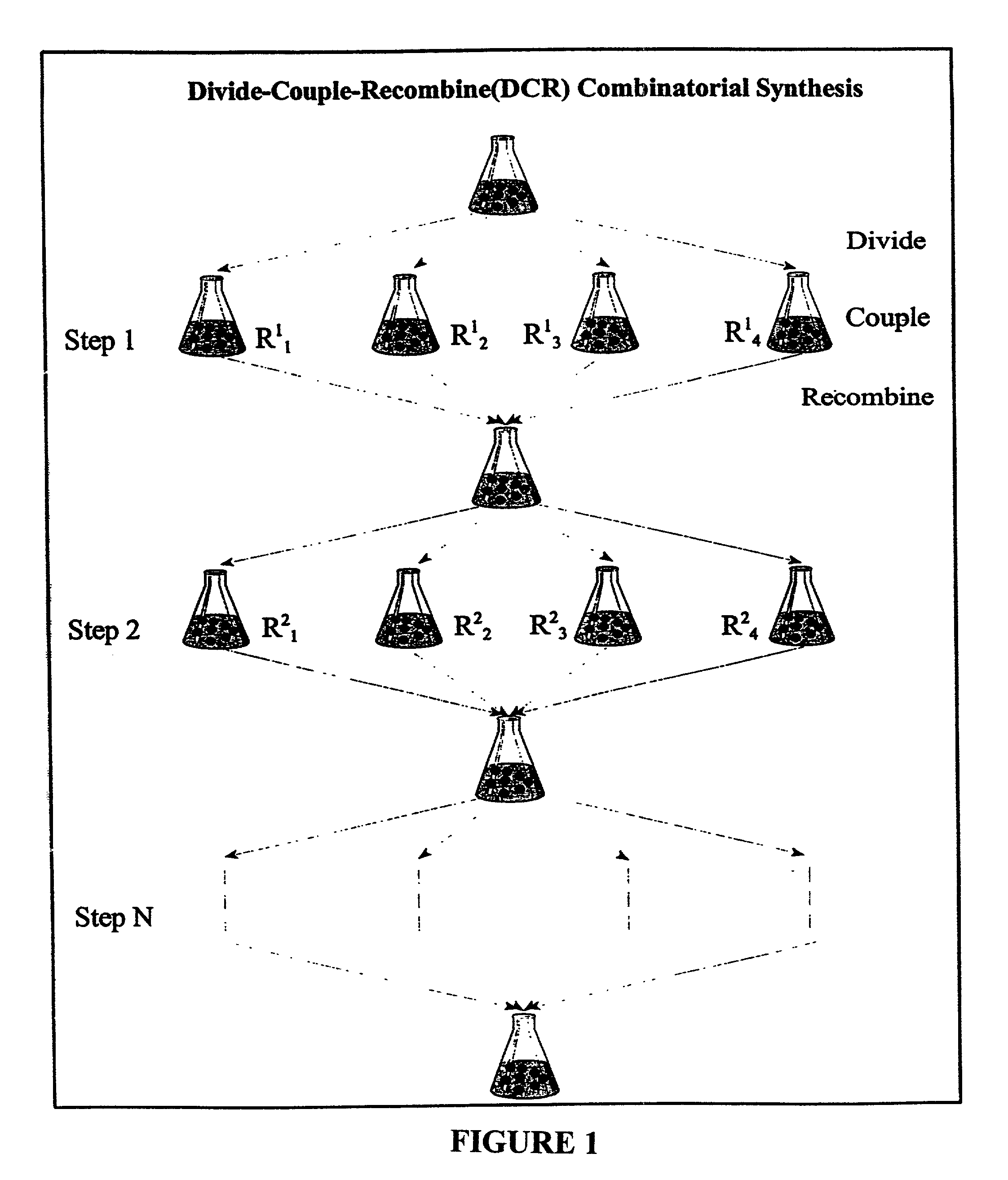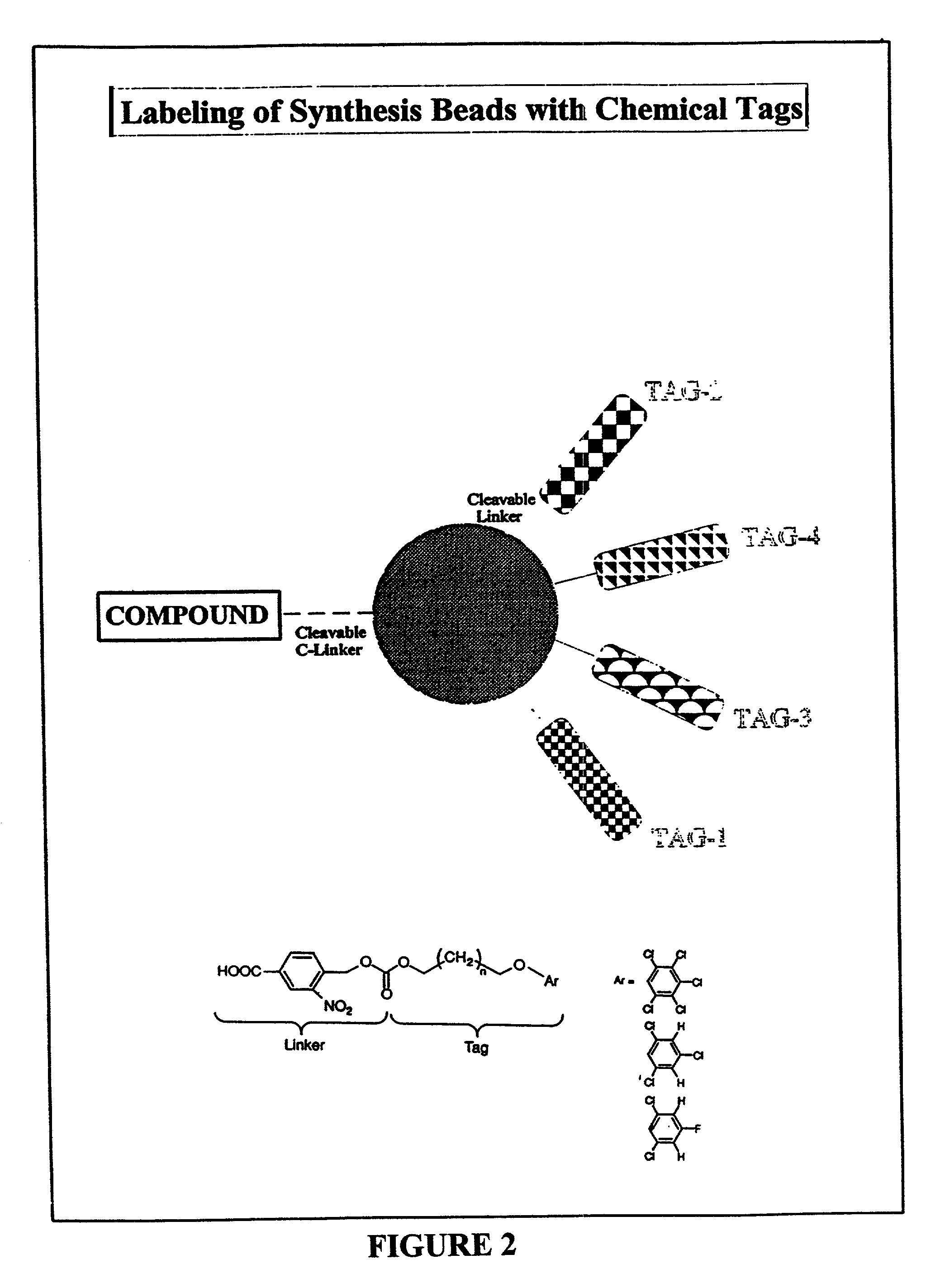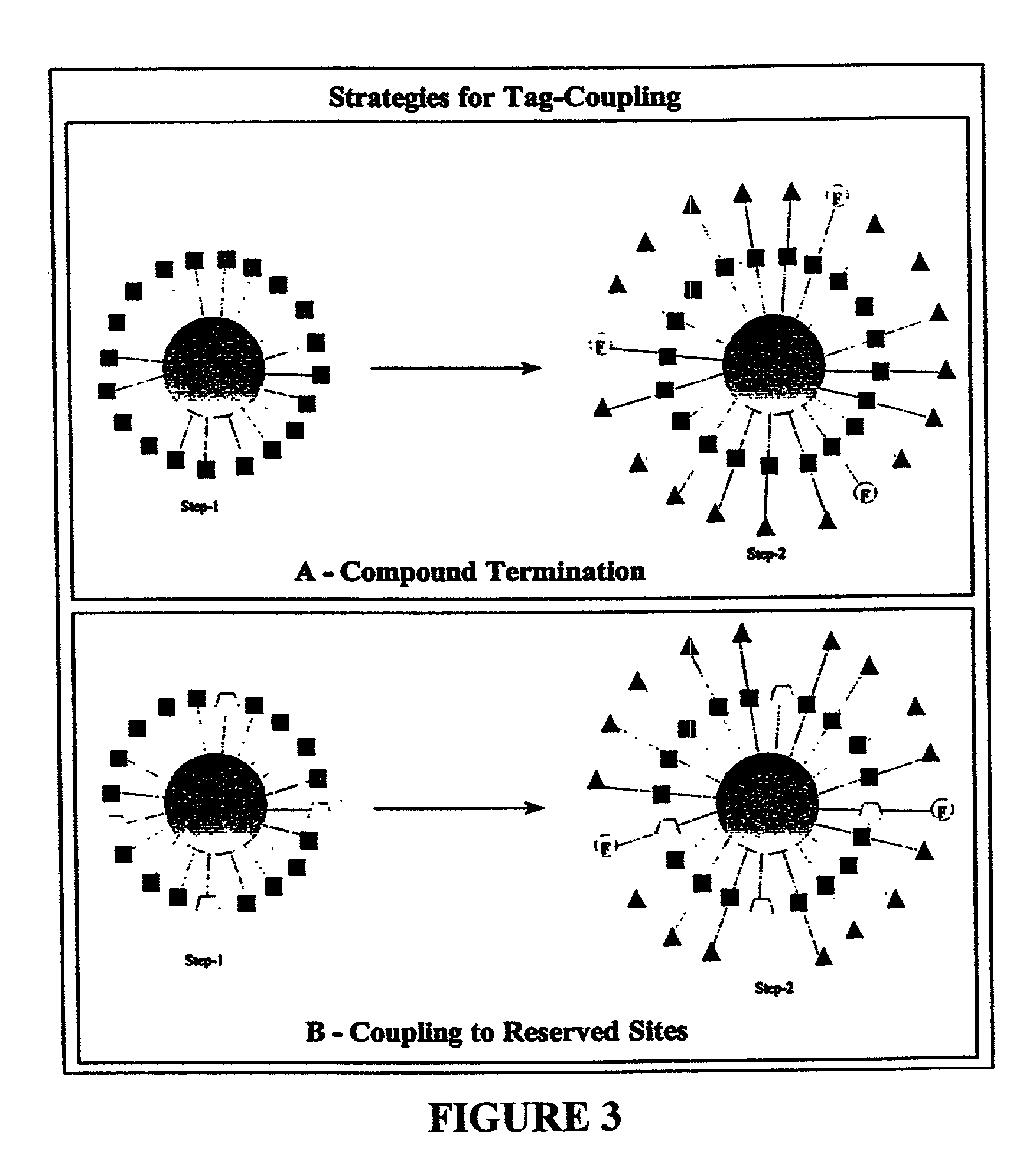Color-encoding and in-situ interrogation of matrix-coupled chemical compounds
a matrix-coupled chemical compound and color-encoding technology, applied in the field of analytical chemistry, can solve the problems of inability to distinguish between stereoisomers, inability to distinguish between precursors of equal mass such as d- and l-amino acids, and the prior art tagging strategy still suffers from three limitations, so as to enable miniaturization and automation of screening.
- Summary
- Abstract
- Description
- Claims
- Application Information
AI Technical Summary
Benefits of technology
Problems solved by technology
Method used
Image
Examples
example 1
1. Color-Encoded PEG-Polystyrene Microspheres
a. Preparation of Color-Encoded PEG-Polystyrene Microspheres
(1) Cy2 (ex=489 nm, em=506 nm)-color-encoded PEG-polystyrene microspheres:
[0081]50 mg of NovaSyn TG amino microspheres (NovaBiochem; 130μ diameter, 15 μmol amine) were equilibrated in 10 ml DMF 30 min at 25° C. The supernatant was removed by filtration, and 100 μl DMF, 1 μl TEA and 15 μl 1 mM Cy2-bisfunctional NHS-ester (Amersham; 15 nmol) were added in DMF. The reaction mixture was shaken 1 h at 25° C., 2 μl (20 μmole) n-butylamine was added, and the reaction mixture was shaken a further 30 min at 25° C. The supernatant was removed, and microspheres were washed twice with 5 ml DMF, rinsed twice with 5 ml chloroform and dried in vacuo.
(2) Cy3 (ex=550 nm, em=570 nm)-color-encoded PEG-polystyrene microspheres:
This preparation was identical to (1) except that, in parallel reactions, 15 μl of 0.001, 0.01, 0.1, and 1 mM Cy3-monofunctional NHS-ester (Amersham; 0.15, 1.5, and 15 nmol) w...
PUM
| Property | Measurement | Unit |
|---|---|---|
| bead diameter | aaaaa | aaaaa |
| molar ratios | aaaaa | aaaaa |
| diameter | aaaaa | aaaaa |
Abstract
Description
Claims
Application Information
 Login to View More
Login to View More - R&D
- Intellectual Property
- Life Sciences
- Materials
- Tech Scout
- Unparalleled Data Quality
- Higher Quality Content
- 60% Fewer Hallucinations
Browse by: Latest US Patents, China's latest patents, Technical Efficacy Thesaurus, Application Domain, Technology Topic, Popular Technical Reports.
© 2025 PatSnap. All rights reserved.Legal|Privacy policy|Modern Slavery Act Transparency Statement|Sitemap|About US| Contact US: help@patsnap.com



